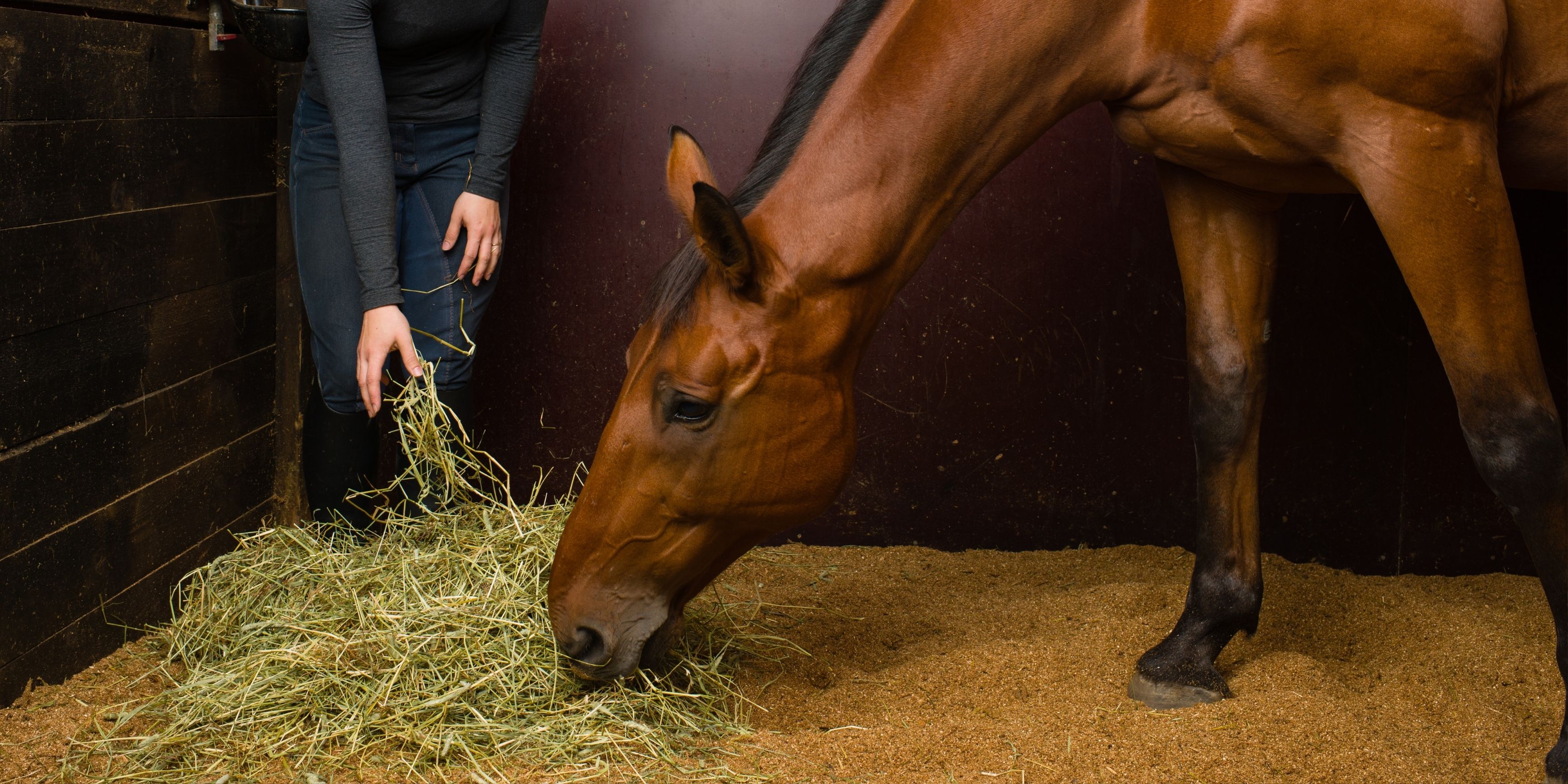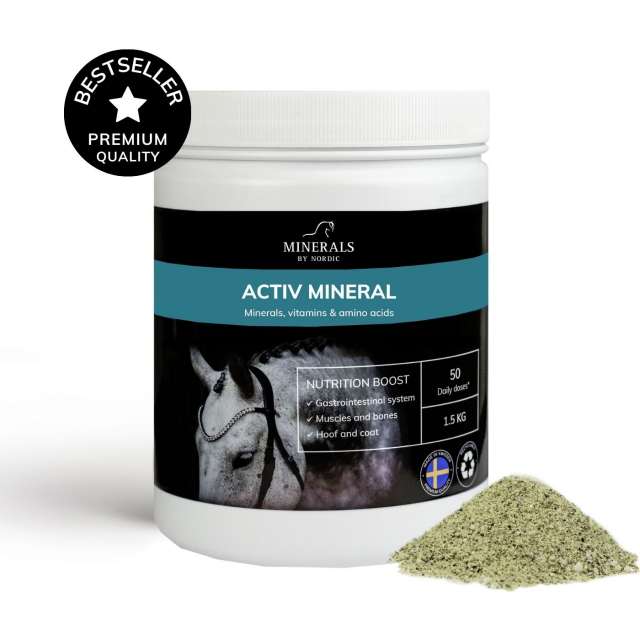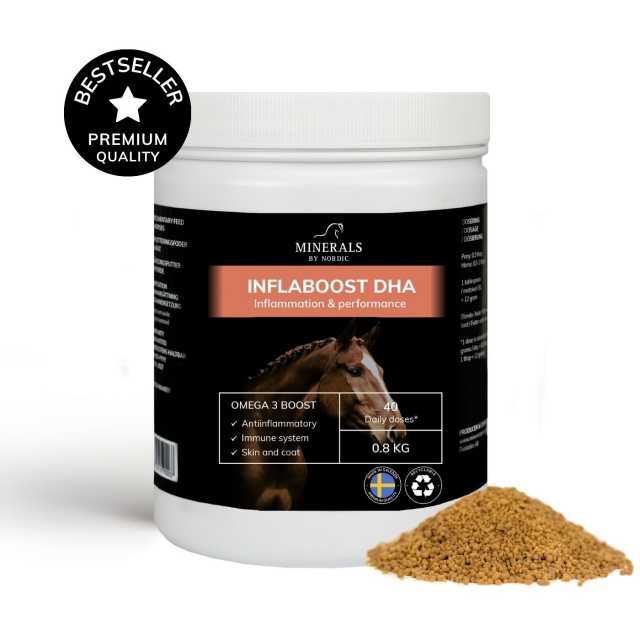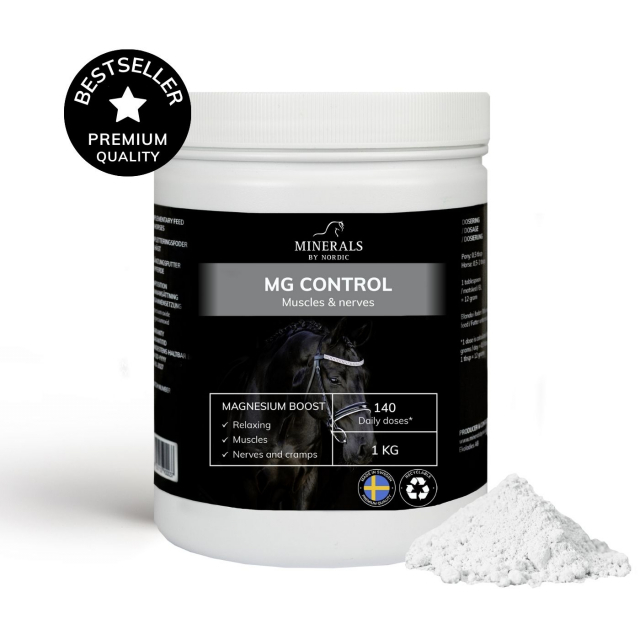
Rehabilitation after laminitis - a guide
Laminitis is a serious disease that affects the horse's hooves through inflammation of the laminae. These laminae are thin layers of tissue that connect the outer part of the hoof to the inner skeletal structure. The inflammation can cause intense pain and, in some cases, damage the hoof's structure so severely that it cannot support the horse's weight properly. If you have a horse that is at risk, preventive care is crucial, but if the horse still develops laminitis, what can an owner do to help the horse recover as quickly as possible?
Diagnosis and treatment
When it comes to the diagnosis and treatment of laminitis in horses, early detection and prompt treatment are key to minimizing pain and promoting healing. Veterinarians use various diagnostic methods to confirm laminitis, including clinical examination, X-rays, and sometimes ultrasound to assess the condition of the hoof.
Symptoms of laminitis
Symptoms of laminitis can be quite obvious, including lameness, increased pulse in the fetlocks, warm hooves, and a characteristic stance where the horse shifts more weight onto its hind legs to relieve pain in the front hooves. Once laminitis is diagnosed, the goal of treatment is to reduce inflammation, relieve pain, and promote healing.
Various treatment methods
Treatment methods may include the use of anti-inflammatory medications to reduce swelling and pain. Sometimes the horse may need special shoeing or boots and pads to relieve pressure on the affected hooves and promote healing.
Diet and exercise
In addition to medical treatment, the veterinarian may also recommend changes to the horse’s diet and exercise routine. A balanced diet with sufficient nutrients and high-quality forage can support the horse’s immune system and promote healing. Regular exercise, as much as is possible without causing additional pain, may also be beneficial to promote circulation and reduce the risk of complications.
In summary, a combination of medical treatment, dietary changes, and appropriate exercise are common components in the treatment of laminitis in horses. It is important to work closely with the veterinarian to create an individual treatment plan that meets the horse's specific needs and promotes a swift and successful recovery.

Rehabilitation after a horse has suffered from laminitis is crucial for promoting healing, restoring function, and improving the horse’s quality of life. It is a period that requires careful attention and tailored measures to meet the horse's specific needs.
Through rehabilitation, efforts can be made to reduce pain, restore normal hoof function, and promote healing of any damage. During the rehabilitation period, the horse may have various specific needs depending on the severity of the laminitis and its individual circumstances.
A horse that has suffered from laminitis may experience severe pain and discomfort, which can affect its mobility and ability to perform daily activities such as walking, standing, or eating. Therefore, it is important that the rehabilitation program focuses on managing pain and improving the horse’s comfort as a primary concern.
In addition to pain relief, it is often necessary to make adjustments to the horse's diet and exercise routine to meet its specific needs during the rehabilitation process. Another important aspect of rehabilitation after laminitis is giving the horse time to recover both physically and mentally. This may involve providing the horse with enough rest and a calm environment to minimize stress, allowing it to heal in peace.
In summary, rehabilitation is a vital part of the horse's recovery process after laminitis. By considering the horse's specific needs and providing tailored measures, healing can be promoted, function restored, and the horse’s quality of life improved during this challenging period.
Practical tips and advice for the rehabilitation of laminitis
Caring for a horse that is recovering from laminitis requires precision, patience, and attention to detail. It is a critical period for the horse, where the right environment, support, and care are essential for its recovery and well-being. Here are some practical tips and advice for horse owners during the rehabilitation process:
1. Create a calm and stress-free environment: It is important for the horse to be in an environment that promotes calmness and relaxation. Avoid loud noises, stressful situations (such as leaving the horse alone in the stable), and other factors that may cause anxiety for the horse.
2. Provide sufficient rest: During the rehabilitation process, the horse needs plenty of rest to allow healing and recovery. Ensure that the horse has access to a comfortable and soft resting area where it can lie down and rest undisturbed. Keep in mind that full recovery from laminitis does not happen overnight!
3. Adjust the diet to the horse’s needs: The horse's diet plays a crucial role in the rehabilitation process. It is important to design a feeding plan that suits the horse's specific needs during recovery and in the future after it has healed. Key factors to consider include the sugar content in hay and concentrates, which should be as low as possible to support recovery. It may also be necessary to adjust the amount of forage, add extra nutrients, or use supplements to promote the healing process.
4. Monitor the horse’s health closely: During the rehabilitation process, it is important to regularly monitor the horse's health to detect any changes or complications early. Keep track of the horse's appetite, weight, movement patterns, and overall well-being, and report any abnormalities to the veterinarian immediately.
5. Regular exercise: Depending on the horse's condition, regular exercise may be an important part of the rehabilitation program. Work with a veterinarian or physiotherapist to design an appropriate exercise plan that promotes healing, strengthens muscles, and improves mobility once the horse can move without pain.
6. Use hoof boots when necessary: If the horse is barefoot and needs extra protection or cushioning for its hooves during the rehabilitation process, consider using hoof boots with shock-absorbing soles (and possibly a soft insole inside) to help the horse gradually start moving without pain in its hooves.
By considering these practical tips and advice, as a horse owner, you can create an optimal environment and provide the best possible care and support for your horse during its recovery from laminitis. Remember that every horse is unique, so it is important to tailor care and support to the horse’s individual needs and circumstances!


 SWE
SWE


 ENG
ENG NO
NO AX
AX DE
DE